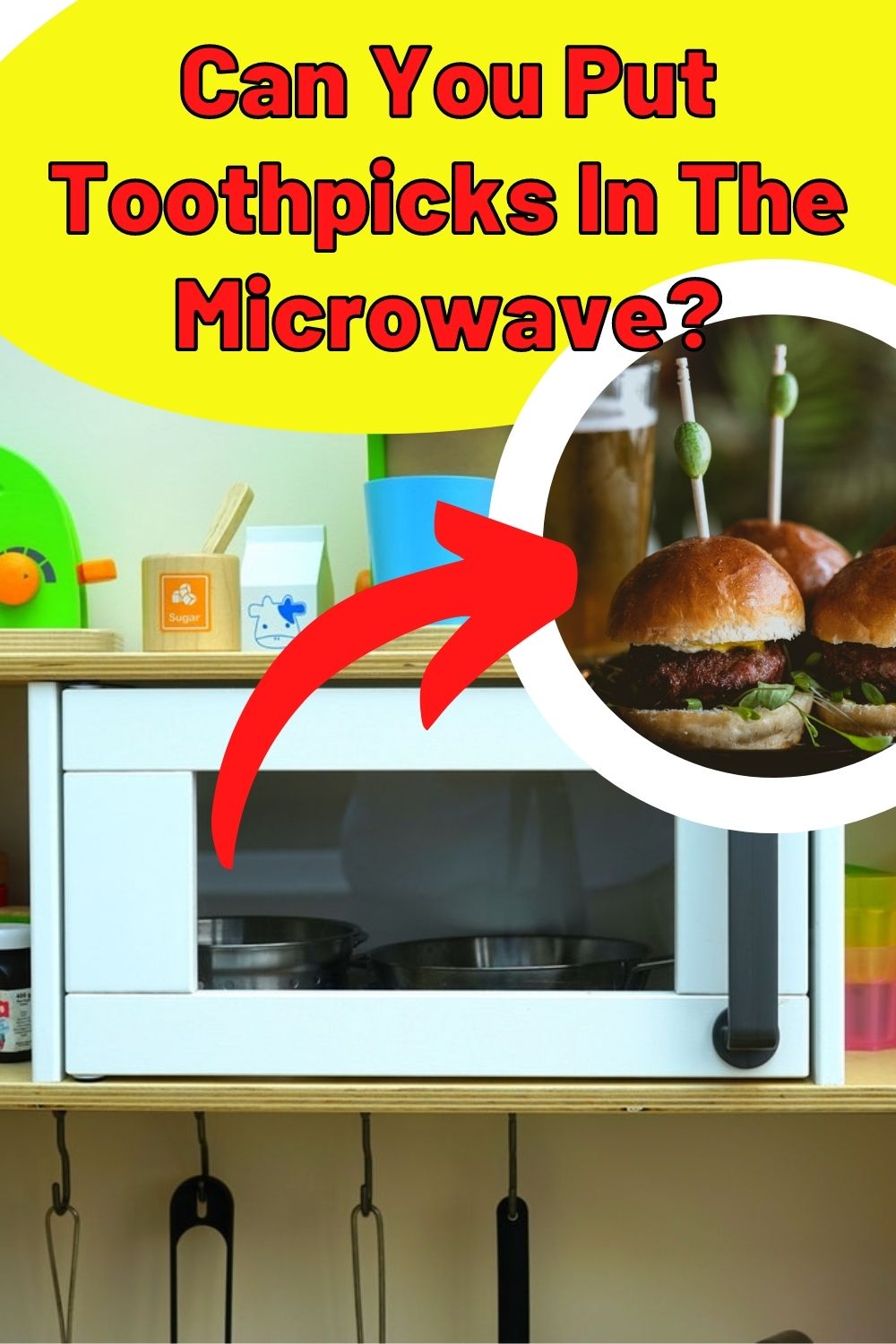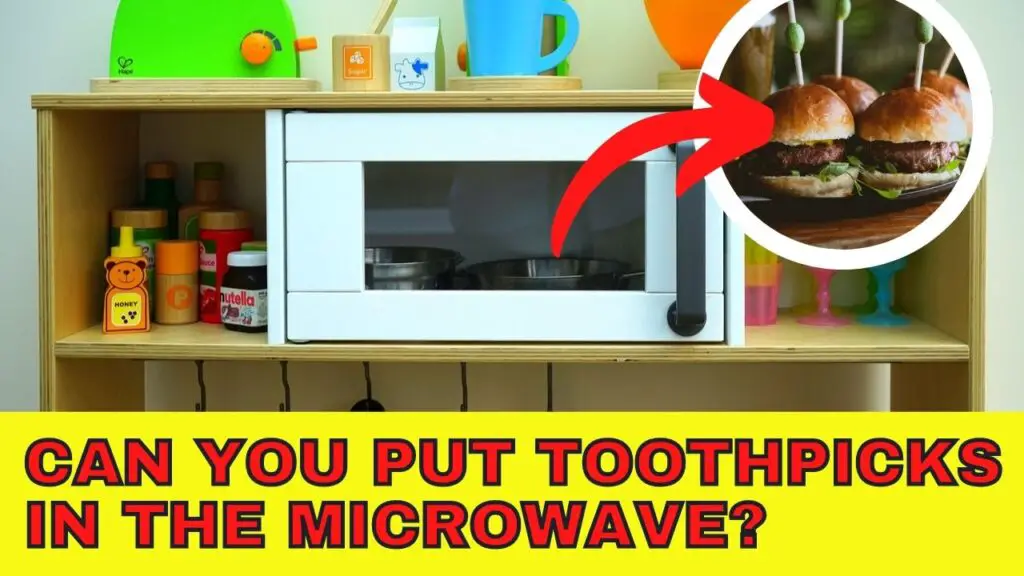We all know you should never put metal in the microwave, but what about wooden toothpicks? That’s a no, too. Before you pop your grilled cheese sandwich in the microwave, make sure you give it a once-over and remove any toothpicks. Toothpicks and other sharp, non-metal objects should never be put in the microwave.
Any object, metal or not, that comes to a point at the end can spark and cause a fire. Sharp objects can cause a phenomenon known as ‘arcing’.
Arcing is when sparks fly in the microwave. This happens when two metal surfaces connect inside the microwave. Arcing has several causes, including microwaving plates with gold paint, microwaving dishes with metallic materials, putting sharp objects in the microwave, or microwaving dense vegetables such as green beans, green peppers, spinach, and raw carrots.
Another reason to never put wooden toothpicks in the microwave is the risk of toxic gasses. When heated, the wooden toothpick can release gasses that can cause you harm. So, to avoid damaging your microwave and ruining your meal, always double-check that your dish doesn’t contain any sharp objects such as toothpicks.
Can You Put Wood Stick in the Microwave?
You can put wood sticks, such as kebab sticks, in the microwave, provided that they aren’t sharp and they aren’t metal. That being said, if you’re putting wooden sticks in the microwave, there are a few safety measures you should take to avoid your microwave arcing.
Firstly, if you’re reheating food that contains a wooden stick, try to heat it up in short intervals to avoid the skewers getting hot enough to catch fire. Secondly, you can soak the wood sticks in water before putting them in the microwave to further reduce the risk of fire.
Generally speaking, wood sticks that aren’t sharp at the end or made of metal are safe to pop in the microwave for short intervals to reheat food. When it comes to wooden utensils such as bowls, it’s best not to nuke wood in extreme heat. Opt for plastic or other microwave-proof material to prevent damaging your microwave, utensils, or food.

Can You Cook Food with Toothpicks in it?
Have you ever wondered if toothpicks can go in the oven? The answer is yes, they can. It’s perfectly safe to cook food with regular wooden toothpicks. However, never put toothpicks with frills or other decorative details into the oven. These are fire hazards.
While unsafe to use in a microwave, wooden toothpicks and skewers can go in the oven because they continue to absorb water from the food as it cooks. This prevents the toothpicks from catching fire.
To ensure the tips of the toothpicks don’t catch fire in the oven, try soaking them in cold water for 10 minutes first. For wooden skewers, soak for up to thirty minutes before use. Don’t soak wood toothpicks or skewers for too long, they will get overloaded with moisture and begin to splinter. If you notice your skewers have splintered, stop using them immediately. This is a choking hazard.
Alternatively, you can buy metal toothpicks that are safe to use in the oven, and reusable, too. Just be careful when you remove your food from the oven, as metal toothpicks get very hot.
Another fire-safe alternative to toothpicks is to use uncooked spaghetti to hold your food together.
What Materials Should Not Be Put in the Microwave?
There are certain materials that should never be microwaved because they’re a fire hazard, or they could explode or release toxic gasses. Here are some things that should not be put in the microwave:
- Metal and containers with metal trim
- Dishes with gold paint
- Paper bags
- Take-out containers
- Sharp objects
- Yogurt and butter containers
- Eggs (in the shell)
- Styrofoam
- Grapes
- Hotdogs
- Uncovered sauces or dips
- Dirty kitchen sponges
- Dense vegetables such as raw carrots and green beans
Finally, if you’re thinking about turning your microwave on with nothing inside to see what happens, don’t. This can destroy your microwave, potentially blowing it to pieces.
When the microwave is turned on, the microwaves need to go somewhere. If they don’t have anywhere to go, they bounce off each other before being absorbed back into the microwave. In a worst-case scenario, this will cause the microwave to explode.

